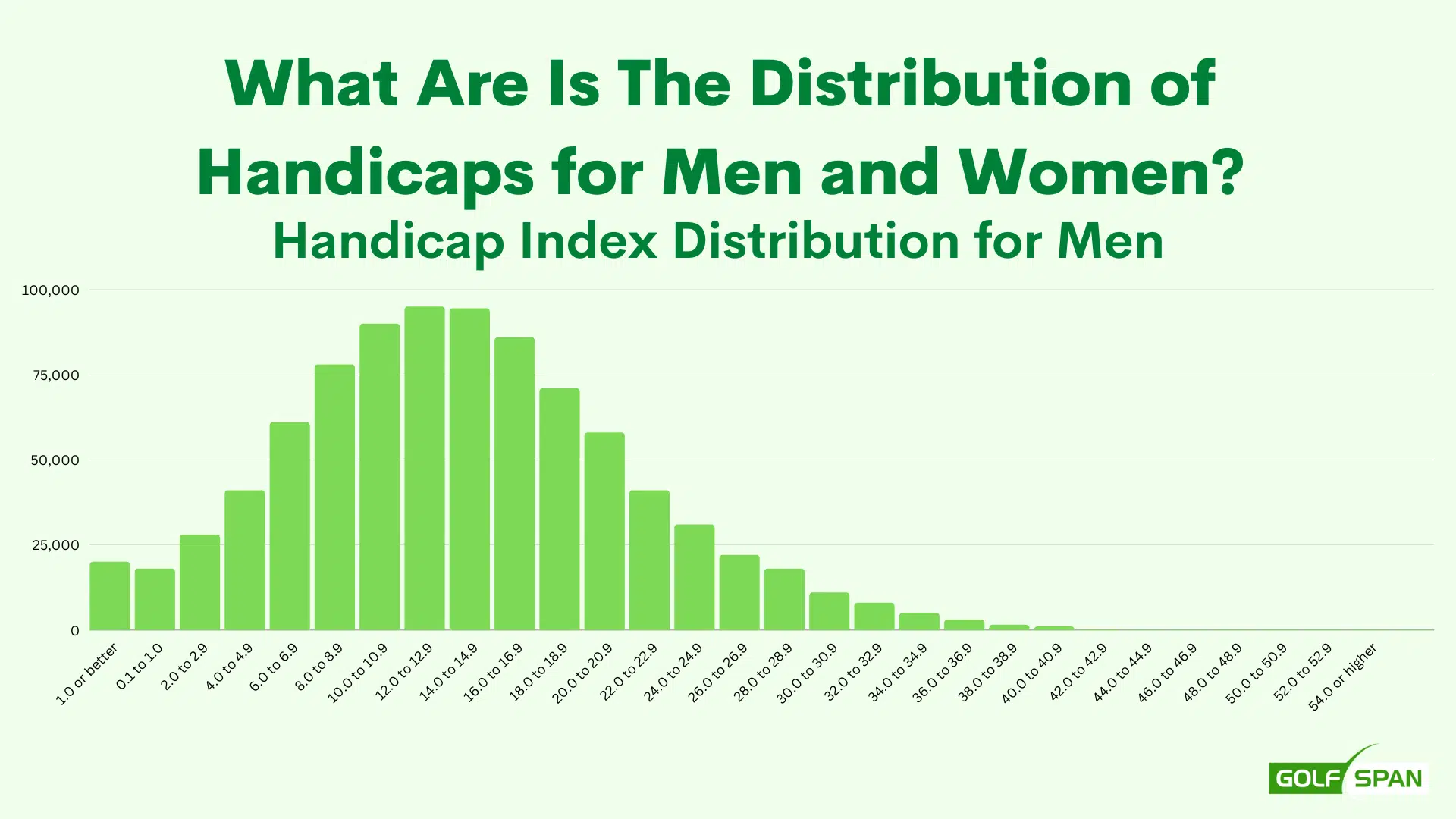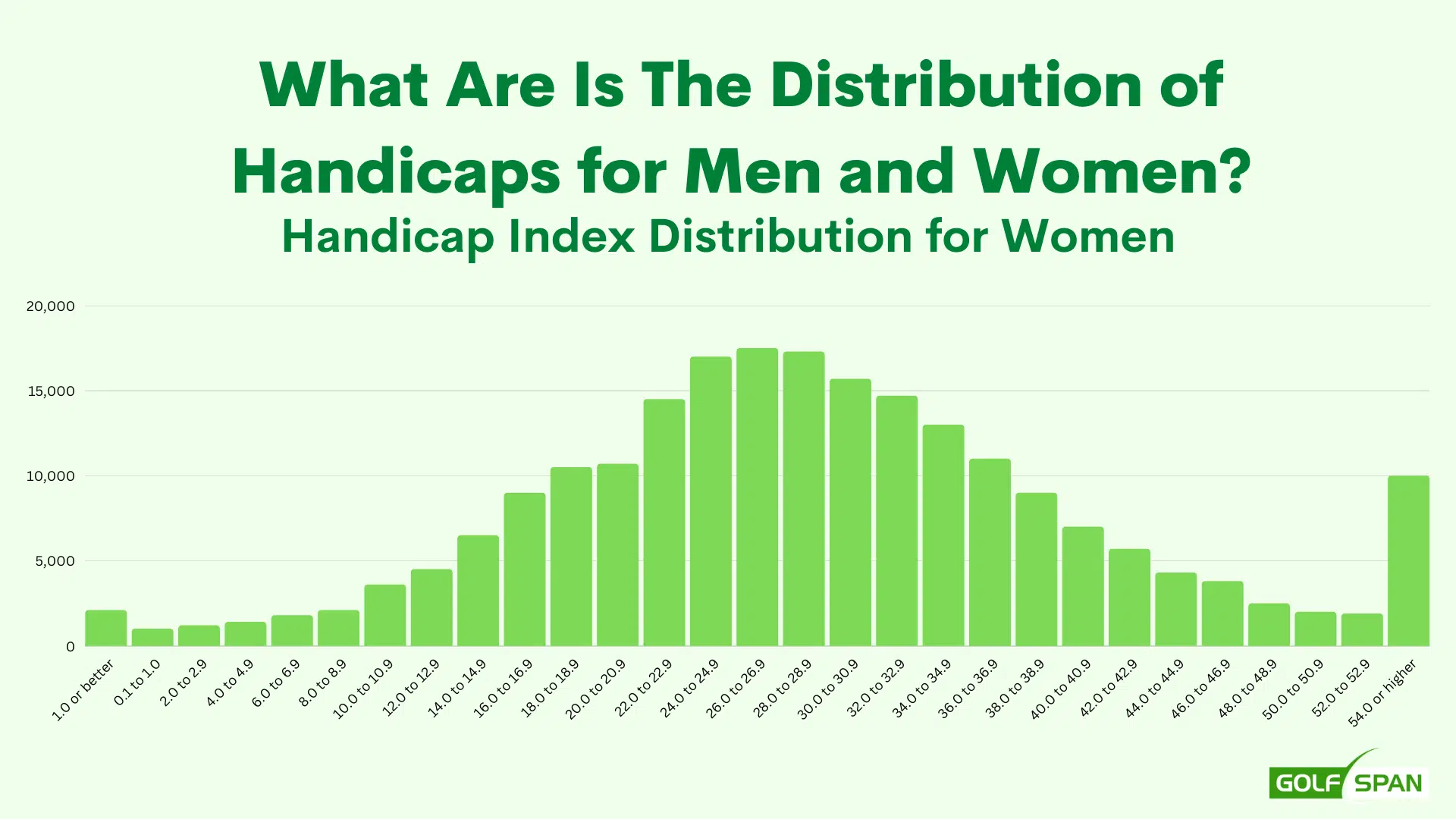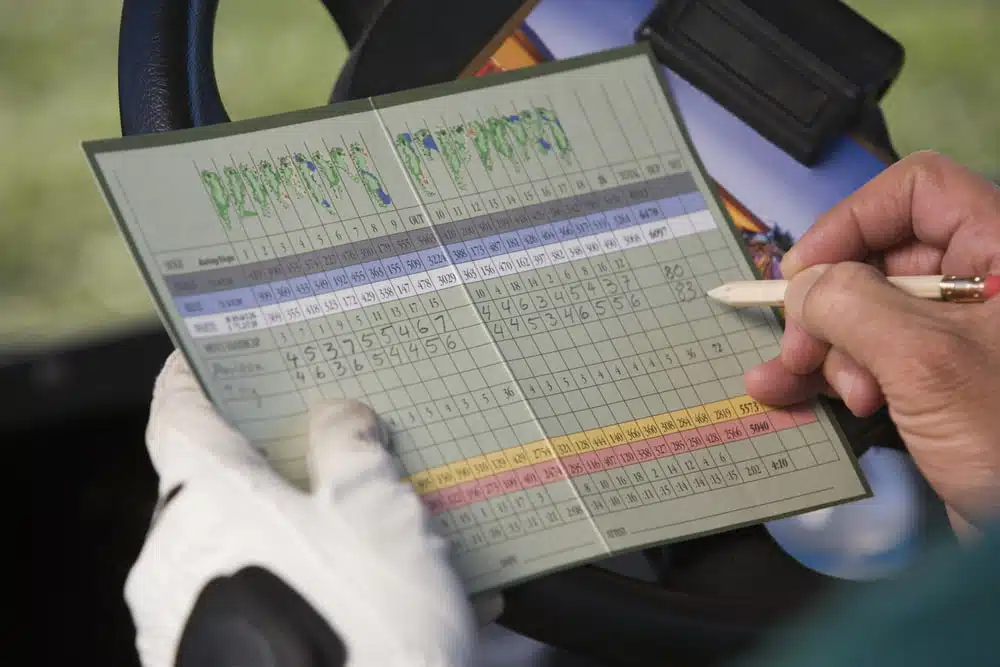Are you interested in playing golf equally with everyone in your foursome? Do you ever feel out of place when competing against golfers who outscore you on every hole? If you answered yes to these questions, it is time to start understanding golf handicaps for beginners.
So, what is a handicap in golf? The golf handicap system gives each player a number that represents their ability. It lets players at various skill levels compete evenly against each other. It rises or falls depending on how you perform in each round. Theoretically, you could compete against an icon like Tiger Woods, and it would be fair.
While your handicap is a simple number, it can be confusing to figure out your golf handicap. It can also take some reasoning to understand how the system works.
Read on to learn more and see if you can figure out your own handicap so that you can be on a level playing field with your friends.
Need help lowering your handicap? Check out the in-depth review of the best drivers for high-handicappers.
What is a Handicap in Golf?
The handicap system makes it easier to gamble against other players of greater ability.
A Golf Digest survey from 2013 shows roughly 80 percent of golfers gamble when they play. You wouldn’t wager in another game against someone of much greater skill, but with the handicap system, the player with the higher handicap will wager that they can close the gap from the strokes between their handicaps. This system was designed to make the competition more fun.
You will learn how to calculate golf handicaps regularly for yourself and anyone you golf with. Unlike many other sports, amateurs can test their limits with the professionals they watch on Sunday. The golf handicap system is mathematically based, so it is as fair as there can be in the world of sports.
A proper and legitimate playing handicap can be used for various tournaments and fun rounds on the golf course, so make each stroke count.
What Are the Handicaps for Average Players?

The great thing about it is that you can calculate a handicap no matter which golf course you play. It is important to note that the most accurate handicaps will come from playing the same course.
Once the golf handicap is established, you’ll be able to travel to many different courses and use your regular handicap. You could even travel across the pond, play St. Andrews, and use your handicap to challenge the locals.
In most cases, the playing handicap is like the sport in general. The lower the score, the better you play. A good golf handicap is usually below 10. This would mean that a player with a handicap of 10 typically shoots around 82 for 18 holes.
The average golf handicap for men and women golfers is around 15. Golfers with a handicap of 15 shoots around 90.
What’s an Easy Way To Figure Out Your Handicap?
There are general golf handicaps and official handicaps created by the United States Golf Association (USGA). The easiest way to find a not-so-reliable handicap is by simply counting the number of strokes over par on a course.
For example, if you shot a 100 on a course that was a par of 72, your handicap would be 28.
But there’s a more accurate way of finding your handicap below.
Read also: USGA vs PGA
How Do You Use a Golf Handicap?
Your golf handicap will give you an allowance of shots for each round based on how well you golf. Handicaps begin at 28 for men and 36 for women.
The lower your handicap, the better you play. You take each round, add the total number of shots, and deduct the handicap from your net score. This will let you fairly compete against better golfers.
The USGA Handicap System
How does the golf handicap system work? The USGA, governed by the World Handicap System, dictates that to find the most accurate handicap of a golfer, they must have a minimum of 12 established rounds of golf to receive an official handicap. The best and worst rounds are typically discarded to find an adequate representation of your skills. It should also be noted that these rounds must be consistently played over time.
If you frequent golf courses that are USGA-approved for indexing purposes, you may be able to establish a handicap index. This allows you to consistently measure your handicap year-to-year with no more than 20 rounds being used to compute the USGA handicap formula. By the way, sandbagging is not an acceptable way of legitimizing a golf handicap.
What’s The History of the Golf Handicap System?
You can trace the oldest handicap system back to the diary of Thomas Kincaid in the 17th century. Kincaid, a medical student at the University of Edinburgh in Scotland, wrote about many aspects of golf, which includes the techniques and equipment. The first centralized system from the USGA began in 1911, based on the British Three-Score Average system. The modern golf handicap system evolved from there.
Understanding Golf Handicaps for Beginners
To determine your handicap, this is a methodical procedure. It is imperative to follow the steps accurately to determine a legitimate handicap.
1. Play at least 10 rounds
Go play some golf and keep track of your scores. You should keep an accurate record of your total number of shots played during the rounds. It is wise to play at least 12 and 20 rounds to find an accurate handicap. But you can figure it out with five rounds if you’re in a rush.
Most courses require a minimum of ten rounds.
2. Find Your Adjusted Scores
The USGA has a set of scores for basic handicapping that are part of the overall system. These numbers are the maximum amount you should score in any one-hole of golf during the round.
If this is the first time establishing your handicap, the magic number is 10. That means that for every shot you take over ten, you subtract it from your final score.
Once the handicap has been established, it can be adjusted accordingly. Instead of using ten, you would now use:
- A handicap of 40 or above the maximum score is 10
- A handicap of 30-39 is a maximum score of 9
- A handicap of 20-29 is a maximum score of 8
- A handicap of 10-19 is a maximum score of 7
- A handicap of 0-9 is a maximum score of double-bogey
You can also have a negative handicap where you consistently perform under par.
3. Find the Slope
Most golf scorecards will have the course slope rating listed on them. If there isn’t one on the card, you should ask the person at the pro shop to keep your information up to date.
The course slope should not be confused with the course rating.
The rating tells how difficult the course is for a scratch golfer. The slope is based on people who play bogey golf.
In Lehman’s terms, you typically score 18 strokes above par. So, a par-70 course would give a bogey golfer an average score of 88.
4. How to Calculate Your Handicap
The last step is to do the math, so get your calculator handy and let’s look at how to calculate handicap.
First, use your adjusted score from Step 2 above and subtract the course rating.
Take that difference and multiply it by 113. Finally, divide that number by the slope rating from Step 3. This will be your handicap.
Here Is an Example of How the Golf Handicap Is Calculated.
Gary the Golfer found that:
- His adjusted score is: 95
- The course rating is 71.4
- The course slope rating is 120
(Adjusted Score – Course Rating) x 113 / Slope Rating = Your Handicap
In this example:
(95 – 71.4) x 113 / 120 = 22.2
After doing the math, Gary Golfer comes out with a 22.2 golf handicap.
You can expect your handicap golf score to increase or decrease as you play more golf games. Better scores will lower your handicap, and higher scores will raise it.
Now that you know the answer to the question, “What is a handicap in golf?” it’s time to tee it up on the golf course and see what the Golf Gods have in store for you.
Did you enjoy this tutorial? I enjoyed teaching you how to find and manage your handicap. You can use this information to compete more fairly with everyone you play with since you now know the meaning of the golf handicap and how to calculate the golf handicap.
Read More: Could better clubs help you lower your handicap? These are the best golf clubs this year.
FAQs
What Is My Handicap if I Shoot 100?
If you shoot 100 on an 18-hole course, the USGA handicap system scores you at roughly 28 for a golf handicap. Remember that this assumes you played on a 72-par course (100 – 72 = 28).
What Does +7 Handicap Mean?
Anyone with a +7 handicap belongs to the top 21 percent of all male golfers. That handicap grows even better for females because those with this handicap belong to the elite top three percent.
What is a Golf Handicap in Simple Terms?
To put it simply, golf handicap helps you compete with better golfers more fairly. This handicapping system has evolved to even the playing field when you go up against more advanced players.
Do You Round a Golf Handicap Up or Down?
Whenever you round out your calculations in golf for the handicap, you should round upwards. For example, anything over 0.5 will round it up.
Nick is the founder of GolfSpan and an avid golfer. He's not quite a pro but has over 15 years of experience playing and coaching golfers worldwide. His mission is to bring the golfing community a better experience when it comes to choosing the right golf gear and finding the right setup for your game.









